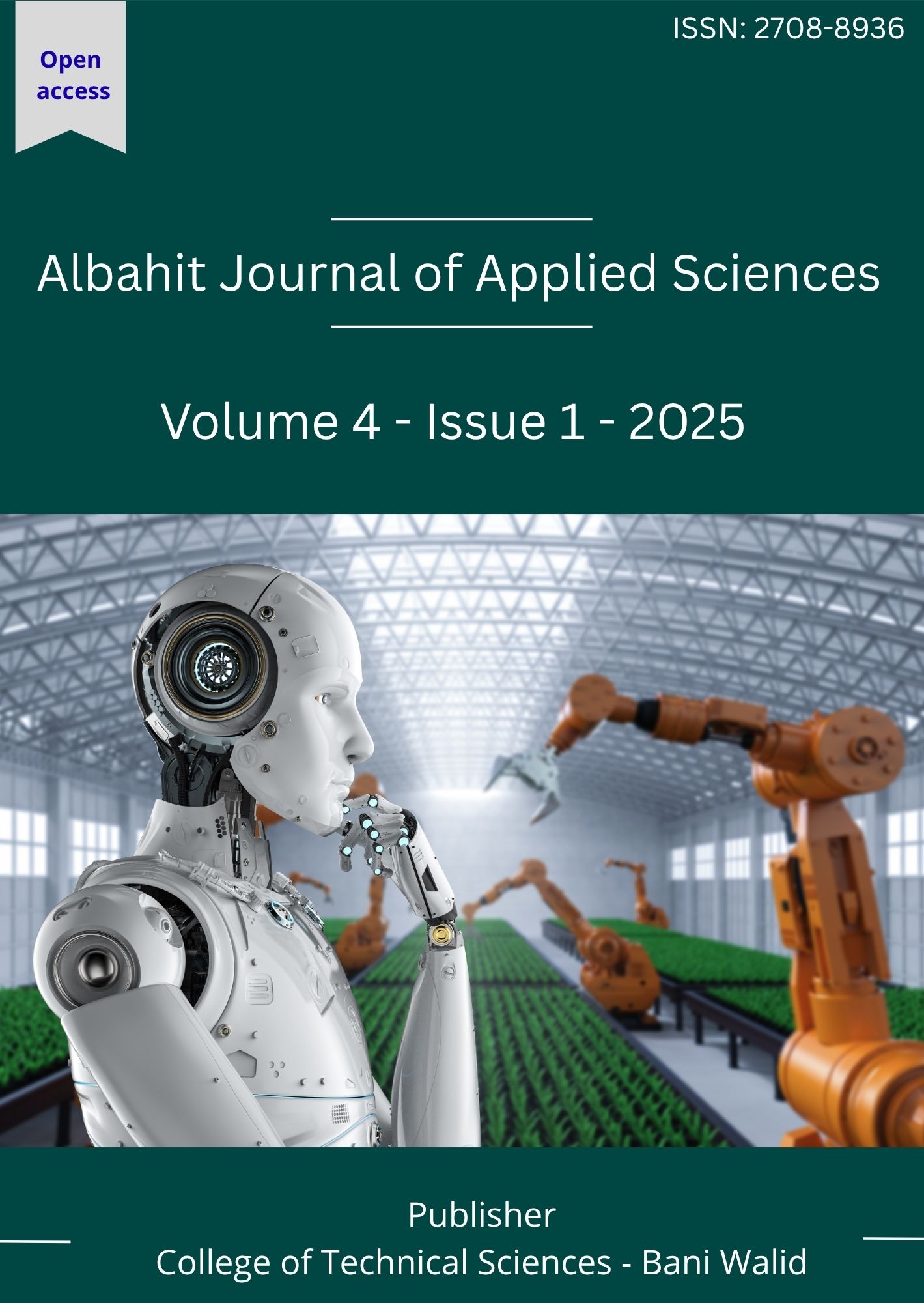Effect of Water Cooling on Photovoltaic Performance and Efficiency
الكلمات المفتاحية:
Photovoltaic panels، Water cooling، Solar irradiance، Efficiency improvement، Hot climateالملخص
Photovoltaic (PV) panels exhibit reduced electrical performance as their surface temperature rises due to direct solar radiation, mainly in hot climates. This study experimentally evaluates the effectiveness of continuous water cooling applied to the back surface of a 50 W polycrystalline PV module in Benghazi, Libya. Measurements of solar irradiance, module surface temperature, open-circuit voltage (Voc), current (I), and maximum power (Pmax) were recorded at 10-minute intervals during peak solar hours under two conditions: without cooling (control) and with continuous water circulation. The water cooling reduced the module temperature by an average of approximately 3 °C, which resulted in a measurable increase in Voc and current. Consequently, the maximum power output increased by about 8% and the overall module efficiency improved by roughly 7% compared to the uncooled condition. The findings indicate that simple water-cooling systems can be a low-cost and effective method to mitigate thermal losses and enhance PV performance in hot regions. Recommendations include testing the approach across different PV technologies and assessing sustainability when water resources are limited.
المراجع
• AIP. (2021). Nominal Operating Cell Temperature (NOCT). PV Education. https://www.pveducation.org
• Alami, A. H. (2014). Effects of evaporative cooling on the efficiency of photovoltaic modules. Energy Conversion and Management, 77, 668–679. https://doi.org/10.1016/j.enconman.2013.10.019
• Askari, M., Mirzaei, M. A. V., & Mirhabibi, M. (2015). Types of solar cells and application. American Journal of Optics and Photonics, 3(5), 94–113.
• Bahaidarah, H. M., Subhan, A., Gandhidasan, P., & Rehman, S. (2013). Performance evaluation of a PV module by back surface water cooling for hot climatic conditions. Energy, 59, 445–453. https://doi.org/10.1016/j.energy.2013.06.043
• Ceylan, I., & Ilhan, A. (2014). Cooling of a photovoltaic module with temperature-controlled solar collector. Energy and Buildings, 72, 96–101. https://doi.org/10.1016/j.enbuild.2013.12.027
• Du, B., Hu, E., & Kolhe, M. (2012). Performance analysis of water-cooled concentrated photovoltaic (CPV) systems. Renewable and Sustainable Energy Reviews, 16(9), 6732–6736. https://doi.org/10.1016/j.rser.2012.09.007
• Fai, T. (2022). Enhancing the performance of photovoltaic panels by water cooling. Journal of Renewable Energy, 13(2), 45–52.
• Giz. (2009). How does heat affect solar panel efficiency? CivicSolar Knowledge Base. https://www.civicsolar.com
• Moharram, K. A., Abd-Elhady, M. S., Kandil, H. A., & El-Sherif, H. (2013). Enhancing the performance of photovoltaic panels by water cooling. Ain Shams Engineering Journal, 4(4), 869–877. https://doi.org/10.1016/j.asej.2013.03.010
• Teo, H. G., Lee, P. S., & Hawlader, M. N. A. (2012). An active cooling system for photovoltaic modules. Applied Energy, 90(1), 309–315. https://doi.org/10.1016/j.apenergy.2011.01.017
• Zeman, M. (2003). Introduction to photovoltaic solar energy. Delft University of Technology.







